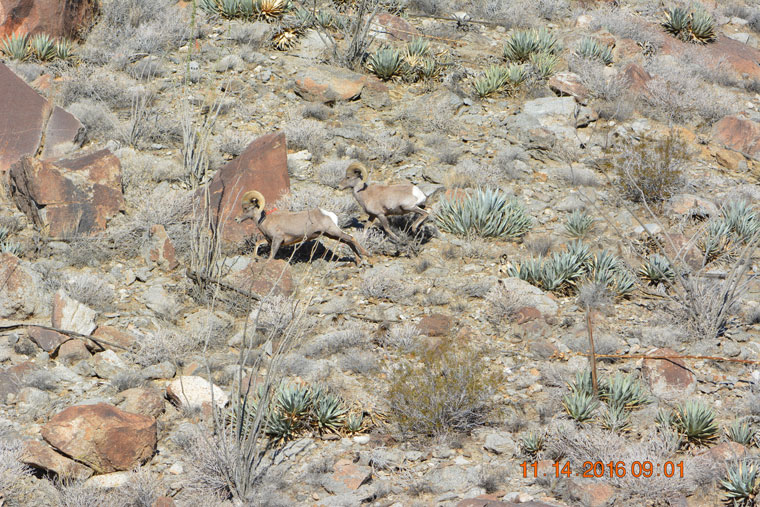

Southern California’s bighorn sheep population is flourishing. The census of bighorn sheep was conducted in November. This was one of the largest counts in recent years, according to Kevin Brennan, wildlife biologist with the California Department of Fish and Wildlife.
The survey was conducted over several days. Helicopters flew over the bighorn sheep’s habitat from the northern edge of the San Jacinto Mountains to the Mexican border. Biologists, on board, take photos of the sheep from the air.
This year, the flights recorded 588 bighorn sheep. Since the flights cannot find the entire sheep population, the estimated total sheep population is 794. The recovery population goal is 950, according to Brennan.
“The count went really well. It was one of the most in the peninsular range ever,” Brennan said. “Any time we see more than 500 is rare.”
The range is divided into nine sectors, including the San Jacinto Mountains and the Northern, Central and Southern Santa Rosa mountains. Fifty-four sheep, including 21 ewes, were spotted in the San Jacinto region.
Another positive observation is that the number of ewes is high in all sectors, according to Brennan. The goal is at least 25 ewes in each sector. Four sectors were shy of the goal; one was the San Jacinto Mountains, where 21 were spotted, but the population estimate is still greater than 25.
The greatest number of spotted sheep was 126 in the Central Santa Rosa Mountains sector.
Of the 588 spotted sheep, 92 of 149 marked or collared sheep were identified.
Bighorn sheep are a protected species, but are improving in the peninsular range, Brennan stated.
One of the major threats to the sheep was development within its habitat, especially in northern Riverside County. But the county’s multi-species plan has helped the state’s management of the sheep population, he noted.










